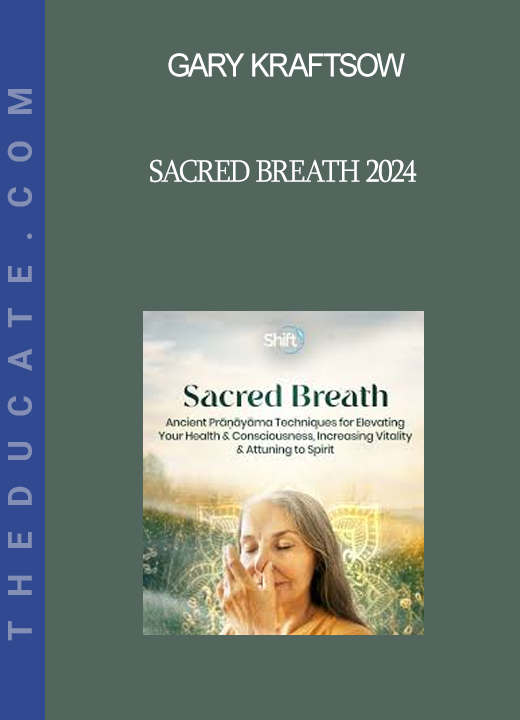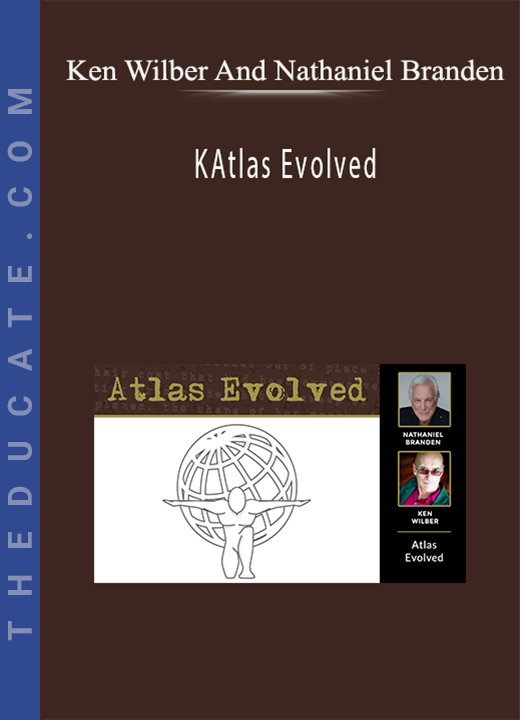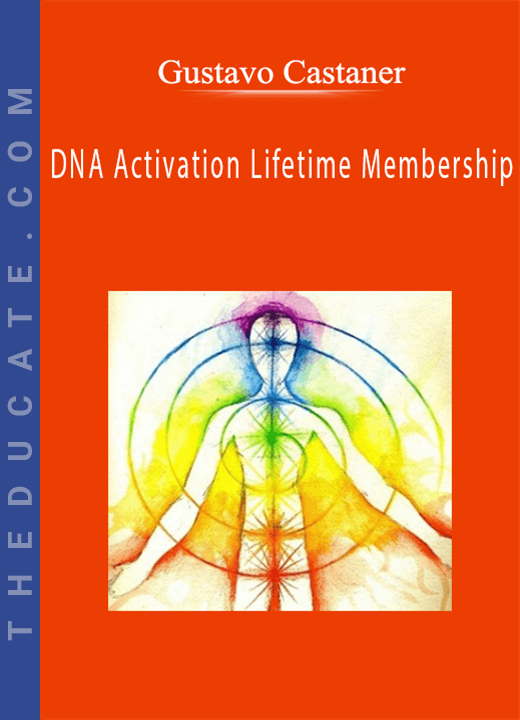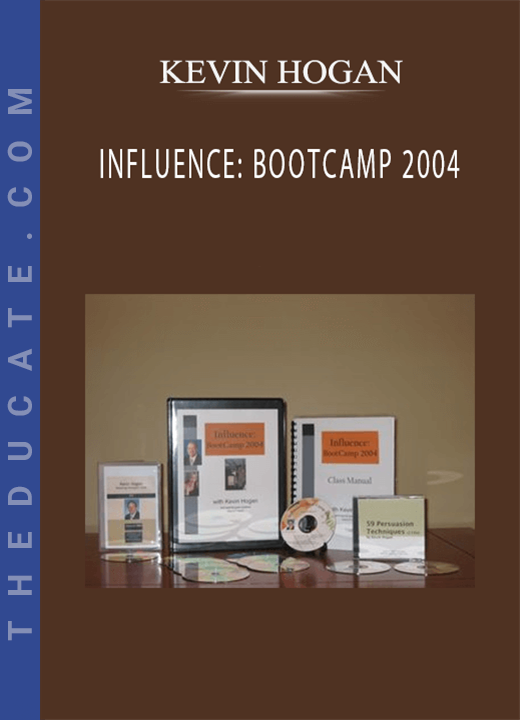Description
Gary Kraftsow – Sacred Breath 2024
During this 7-week live video course, you’ll explore:
- A deep understanding of the importance of breath — and how you can harness its power for health and wellbeing
- Techniques for controlling the flow of the breath to produce different outcomes, addressing whatever ailments you’re struggling with
- How to build your breath threshold — a powerful yet often misunderstood secret of Yoga — and why this is tremendously useful for your health and wellbeing
- How through working with the breath, you can consciously influence sympathetic-parasympathetic regulation and thereby optimize physiological processes
- An ancient treatment paradigm, Bṛṁhaṇa, Laṅghana, and Samāna, that’s used in both Ayurveda and Yoga Cikitsā (Yoga Therapy)
- The science behind the 4-part breath cycle to deepen your practice and learn to use these tools to manage and transform your condition
- Ways to address your specific emotional or physiological conditions with ancient heating and cooling techniques
- Chanting, meditating, and other complementary healing tools, woven together using your breath
- Weekly guided practices to bring these ancient traditions in your daily life
What You’ll Discover in These 7 Weeks
In this 7-week transformational course, Gary will guide you through the fundamental skills and competencies you’ll need to practice sacred breathwork practices from a traditional yoga lineage for managing stress, increasing vitality, and attuning to spirit.
Join the Livestream — or Stream Later to Watch at Your Convenience
 You’ll connect with Gary and experience his teachings through livestreaming video via any connected device. This connection is easy to use and will enhance the impact of Gary’s transmissions. Can’t make it live? After each class, you can stream the video and audio recordings to enjoy anytime and anywhere at your convenience.
You’ll connect with Gary and experience his teachings through livestreaming video via any connected device. This connection is easy to use and will enhance the impact of Gary’s transmissions. Can’t make it live? After each class, you can stream the video and audio recordings to enjoy anytime and anywhere at your convenience.
Course Sessions Thursdays at 10:00am Pacific
This course will feature LIVE teachings, interactive sessions, experiential practices, and Q&A with Gary. Each session will build harmoniously upon the previous ones, so you’ll develop a complete holistic understanding of the practices, tools, and principles you’ll need to customize ancient prāṇāyāma practices to cultivate profound wellbeing.
Module 1: Foundational Prāṇāyāma Principles to Increase Your Energy & Balance Your Nervous System (May 30)

As the course begins, you’ll explore how, through the practice of prāṇāyāma, you can consciously influence the autonomic nervous systems, and support sympathetic-parasympathetic regulation.
Then, Gary will introduce Kriṣṇamācārya’s teachings on how you can consciously control the directional flow of the breath — and how you can adapt the directional flow of the breath to produce different structural and energetic effects.
As a practitioner, you’ll begin to deepen inhalation and exhalation and gain progressively more control over the primary and secondary respiratory musculature.
In this opening module, you’ll explore:
- The difference between prāṇa and the breath — and how working with the breath is a means to work directly with prāṇa
- How through working with the breath, you can influence sympathetic-parasympathetic regulation and thereby optimize physiological processes
- Different ways to control the directional flow of the breath
- The important role of āsana in preparing the body and breath for prāṇāyāma
- Two guided practices, Anuloma Krama and Viloma Krama, which are specialized methods of controlling the flow of inhalation and exhalation
Module 2: Bṛṁhaṇa, Laṅghana, and Samāna to Increase Vitality, Restore Calm, and Balance Your System (June 6)

You’ll explore an ancient treatment paradigm that’s used in both Ayurveda and Yoga Cikitsā (Yoga Therapy), known as Bṛṁhaṇa, Laṅghana, and Samāna.
Traditionally, bṛṁhaṇa means to restore, energize, nourish, or vitalize; laṅghana means to calm, reduce, or purify; and samāna means to equalize, balance, or regulate.
The Bṛṁhaṇa, Laṅghana, and Samāna effects can be created through the intelligent application of the appropriate methods.
Gary will guide you to explore various methods of producing these effects, including your choice of which āsana to use, breath adaptation in āsana, adapting the directional flow of the breath, and prāṇāyāma.
In this module, you’ll explore how to:
- Select specific āsana to create a Bṛṁhaṇa, Laṅghana, or Samāna effect
- Adapt the breath in āsana to create a Bṛṁhaṇa, Laṅghana, or Samāna effect
- Adapt and control the breath in prāṇāyāma to create a bṛṁhaṇa effect, laṅghana effect, or samāna effect
- Use āsana with specialized breath adaptation as well as pranayama to produce a Bṛṁhaṇa during a guided integrated practice
Module 3: Understand the Science Behind the 4-Part Breath Cycle, and Discover How to Build Your Personal Breath Threshold (June 13)

As Gary will explain, the breath cycle refers to one full breath that includes inhalation, retention of the breath after inhalation, exhalation, and suspension of the breath out after exhalation.
The breath threshold is a measure of the maximum duration of one breath cycle that can be comfortably maintained over a minimum of 12 breaths.
The breath ratio refers to the proportional relationship between the four parts of a breath cycle. You can practice ratio no matter your threshold, exploring how far you can go.
In this module, you’ll discover:
- The nature and quality of each of the 4 parts of your breath cycle, and learn how to develop each of them (make them longer, hold, etc.)
- Your personal breath threshold, the value of expanding your threshold capacity (length and ratio), and why it’s so useful for health and wellbeing
- Why and how to select and practice a particular ratio no matter your threshold
- The purpose of a Bṛṁhaṇa, Laṅghana, or Samāna ratio, and how to create each type of ratio
- How to use breath adaptation in āsana to prepare for a Bṛṁhaṇa, Laṅghana, or Samāna ratio
- A guided experiential to put Samāna into practice
Module 4: Ancient Heating & Cooling Techniques for Addressing Your Specific Emotional or Physiological Conditions (June 20)

You’ll explore the various techniques of prāṇāyāma and learn how to practice them in the context of two other, different ancient treatment paradigms:
Sūrya, Sun (or heating), and Candra, Moon (or cooling). This paradigm refers to energetic and psycho-emotional heating and cooling.
Uṣṇa (heating) and Śītalī (cooling). This paradigm refers to thermal heating and cooling.
As Gary will explain, the various prāṇāyāma techniques are categorized according to how and where the flow of the breath is “valved.”
The valve refers to the location (throat/nostril/tongue) and method by which the volume and speed of the flow of the air are regulated. Valving of the breath creates vibration at the valve sites, which determines the specific effect of each technique.
In this module, you’ll explore:
- The various valving techniques of prāṇāyāma
- How to choose an appropriate prāṇāyāma technique for practice to achieve a desired specific effect
- The correct method of creating the valve for each prāṇāyāma technique
- How to pick appropriate breath-centric āsana to support the effect of each prāṇāyāma technique
- How to select an appropriate ratio for each prāṇāyāma technique
- An experiential practice using the Laṅghana technique
Module 5: Create a Conscious Relationship With Your Autonomic Nervous System to Manage Stress (June 27)

The body’s stress response complicates your health and wellbeing.
Your stress response can be a causal or contributing factor in illness or disease, and a complicating factor in its healing. Chronic stress can impact your system at anatomical, physiological, emotional, and cognitive levels which, in turn, can impact relationships and your productivity.
From the perspective of yoga teachings, the key to managing stress lies in your ability to create a conscious relationship with your autonomic nervous system — and how to adapt and apply practices that will help restore balanced sympathetic-parasympathetic regulation.
In this module, you’ll explore:
- How to attune to your autonomic nervous system and identify how stress causes sympathetic-parasympathetic dis-regulation
- How to select the appropriate prāṇāyāma ratio and technique to restore balanced regulation
- How to pick appropriate breath-centric āsana to support the specific prāṇāyāma practice
- How to adapt breath-centric āsana, prāṇāyāma ratio, and prāṇāyāma technique depending on the time of day of practice
- A guided practice designed to help you reduce stress and feel relaxed and at peace
Module 6: Prāṇāyāma Practices for Increasing Energy & Vitality (July 11)

Fatigue is defined as a lack of energy and motivation that can manifest physically, mentally, or both.
Fatigue can be the result of an unhealthy lifestyle. It’s also a common symptom of many conditions and a common side-effect of medical treatments and commonly used over-the-counter and prescribed medications.
In this module, you’ll explore:
- How burn-out and fatigue cause sympathetic-parasympathetic dysregulation
- How to select the appropriate prāṇāyāma ratio and technique to revitalize and nourish the system, and restore balanced regulation
- How to pick appropriate breath-centric āsana to support the specific goals of a prāṇāyāma practice oriented towards revitalizing and nourishing the system
- How to adapt breath-centric āsana, prāṇāyāma ratio — and prāṇāyāma technique depending on the time of day of practice
- A guided practice designed to help you feel restored as you increase energy and vitality
Module 7: Attuning to & Merging With Spirit Through Prāṇāyāma Practice (July 18)

As this course comes to a close, you’ll explore the yoga perspective on Spirit, and how the breath can be used to help us attune to it.
The Vedic tradition uses the word ādhyātmika, meaning “of or relating to the True Self, the Soul or Spirit, or the Supreme Spirit.” Of course, the way each of us thinks about this varies depending on our past conditioning and/or our current orientation.
In world traditions, the dimension of the Spirit is expressed through symbolic language, whether it’s being used to refer to something individual and deep within — or something all-pervading and universal.
In any case, we cannot access this dimension through logic and reasoning but, rather, through faith and the power of symbolic language.
The primary practice for attuning to this dimension in the yoga tradition is mantra japa and meditation. Central channel (suṣumnā nāḍī) prāṇāyāma is considered the best way to prepare yourself to merge with the spiritual dimension of life.
In this module, you’ll explore:
- A yogic mantra that expresses the indwelling Spirit
- How to regulate the breath through the mental recitation of a mantra
- A technique to access the central channe l (suṣumnā nāḍī)
- How to attune to and commune with Spirit
- A guided central channel prāṇāyāma with mantra japa
The Sacred Breath Bonus Offering
In addition to Gary’s transformative 7-week online course, you’ll receive this special bonus offering to complement the course and take your understanding and practice to an even deeper level.
When you register by Midnight Pacific on Saturday, May 11, you’ll receive the bonuses below as an extra gift:
Death, Breath & Yoga
Audio Interview With Gary Kraftsow and Mark Walsh

Listen to Gary’s hour-long interview with Mark Walsh of Embodied Yoga as he discusses his days in India studying with the great yoga masters T. Kriṣṇamācārya and his son, T.K.V. Deśikācar. When Gary was just 19 years old, these master teachers told him that the ultimate goal of yoga is preparation for death! Gary and Mark discuss the lineage of Viniyoga within the origins of yoga therapy. They also touch on the importance of the breath to initiate movement in a Viniyoga practice, as well as the multidimensional model of the human being.
Register by May 11 to claim this bonus before it expires.
Banish the Blues
PDF Guide by Gary Kraftsow From “Yoga International”

The yogic tradition offers many tools to help lift you out of depression and move toward a deeper sense of self. Practicing āsana with adapted breathing, prāṇāyāma techniques, and guided relaxation can help balance the nervous system. The ancients also used meditation, chanting, mantra japa, prayer, right relationship, and right association to elevate mood. In this 19-page PDF guide by Gary Kraftsow, follow a practice in the Viniyoga tradition in which the postures (āsana) prepare the body and breath for prāṇāyāma, prāṇāyāma prepares the mind for meditation, and meditation prepares the heart for prayer in whatever form that takes for you.
Register by May 11 to claim this bonus before it expires.
Plus… you’ll receive these bonuses too!
Pranayama: Unique Gift of the Yogic Tradition
PDF Guide From Gary Kraftsow

Gary Kraftsow asserts that prāṇāyāma is among the most uniquely potent parts of yoga practice. He explains that there’s no other tradition that has the sophistication of the yogic science of breath. In this 2-page article, he eloquently explains the ways you can use pranayama to create the effects you want in your practice. He shows how your asana practice can serve your prāṇāyāma practice, your prāṇāyāma practice can serve your asana practice, and both practices together can serve your meditation practice.
Prāṇāyāma & Meditation: Langhana Ratio 6-2-12-2
Video Teaching and Guided Practice From Gary Kraftsow

In this 31-minute video teaching and guided prāṇāyāma practice, you’ll learn to use a combination of breath and meditation techniques to manage your stress and promote deep relaxation. This langhana practice is particularly potent for dealing with the stress of uncertainty of challenging times. Ultimately, you’ll be guided to find stillness and peace amidst the changes that you’re personally going through — and those affecting the collective.
Sale Page : https://theshiftnetwork.com/course/01GKraftsow03_24







Reviews
There are no reviews yet.